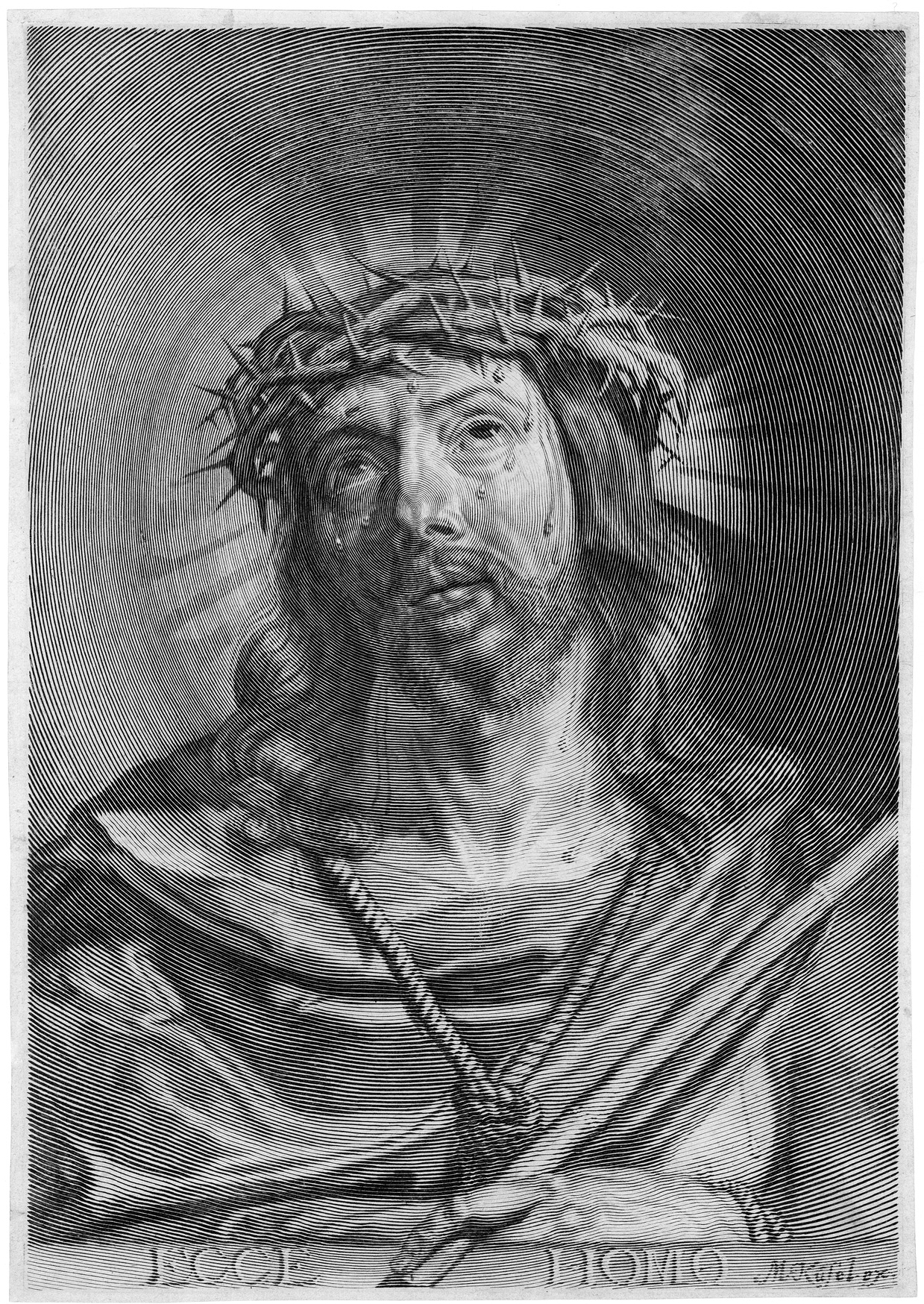Loading the page ...
Matthäus Küsell
(1629–1681, Augsburg)
Ecce Homo. Engraving. 37.2 x 25.2 cm. Le Blanc 1, Nagler 1, Hollstein 1. Watermark: Crowned coat-of-arms.
Like his brother Melchior (1626–1683), Matthäus Küsell came from a respected Augsburg family of engravers and goldsmiths. In 1656 the artist spent some time in Venice and two years later married the daughter of the painter Bernhard Zech in Augsburg. After returning to his native town, he embarked on a flourishing career as an engraver and illustrator and was appointed Kaiserlicher Hofkupferstecher (Engraver to the Imperial Court). His prints are thus very numerous, comprising religious scenes, portraits, thesis leafs and allegories, as well as engraved stage decorations after such Italian masters of the Baroque as Lodovico Burnacini and F. Saturini.
The Ecce Homo is rightly considered to be Küsell’s main work. A masterpiece of technical bravura, it is barely inferior to its obvious prototype, Claude Mellan’s engraving The Sudarium of Saint Veronica (BNIFF 21) from 1649. Like Mellan, Küsell, who was a generation younger, made brilliant use of a single spiral line which radiates from a point in the centre of the plate. The varying thickness of the engraved line is used in masterly fashion to emphasize the light, shade and three-dimensional quality of the individual forms. Instead of taking a frontal view, Küsell shows the Ecce Homo figure as a bust length portrait seen at an angle from below; the upward directed, suffering gaze and the trickling drops of blood create a picture of great dramatic intensity. The astonishing resemblance in the physiognomy almost makes it seem as if Mellan’s Christ has been recalled to life by Küsell and is an actor in a Passion play. In comparison to Mellan’s strangely enraptured image Küsell’s interpretation is more theatrical and lacks the element of mysterious, metaphysical alienation to be found in Mellan’s Sudarium that marks it a masterpiece of 17th century French printmaking.
A very fine, even, and harmonious impression with margins around the platemark. Verso minimally stained, otherwise in perfect and untreated condition. From the collection of Wolfgang von Dallwitz (Lugt 2656). The print is rare. Hollstein records only seven impressions (Augsburg, Coburg, Dresden, London, Munich, Stuttgart).
